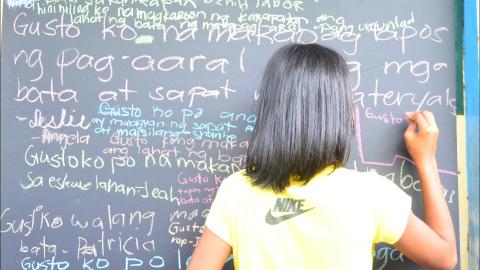
Key Facts
What do we class as violence against children?
Violence against children includes all forms of physical, sexual and mental violence, neglect or negligent treatment, maltreatment or exploitation, harm or abuse, including commercial sexual exploitation, trafficking, child labour and harmful practices, such as female genital mutilation/cutting and child marriage.
How many children suffer from violence each year?
More than half the world’s children - that’s a billion children between the ages of 2 and 17 years - experience some type of violence every year. (1.)
How can violence against children be addressed?
World Vision believes that when known solutions are implemented in the right way, respecting a country's context, and done in partnership with local governments, communities, families and children they yield the most sustainable results.
Our campaign will challenge the attitudes, beliefs and behaviours that condone violence against children and by ensuring governments enact policies that prohibit it and provide services that prevent it. Part of the solutions that World Vision supports is the INSPIRE package.
What is the INSPIRE package?
INSPIRE is a package developed by experts and led by the World Health Organisation, is a set of seven strategies (or solutions) to ending violence against children. They include: 1.) Income and economic strengthening; 2.) Norms and values; 3.) Safe environments; 4.) Parent and caregiver support; 5.) Implementation and enforcement of laws; 6.) Response and support services; 7.) Education and life skills.
How does violence against children impact a country?
Violence against children costs up to US$ 7 trillion each year or 8% of global GDP. This is more than the Gross Domestic Products (GDP) of Australia, Canada, India, and Mexico combined. (2.)
How do the different forms of violence manifest themselves?
- Child marriage: Worldwide, about 1 in 7 adolescent girls (aged 15 to 19) are currently married or in union. Available data shows that boys are far less likely than girls in the same region to marry before age 18. More than 700 million women alive today were married before their 18th birthday. (3.)
- Child labour: There are an estimated 168 million child labourers worldwide with over half of these (85 million children) involved in hazardous work. (4.)
- Child trafficking: Children make up more than a quarter (28%) of all detected trafficking victims. (5.)
- Children on the move: Nearly 50 million children, across the globe, have migrated across or within borders, or been forcibly displaced. More than half that number – 28 million – are boys and girls who have fled violence and insecurity. (6.)
- Physical abuse: Around 6 in 10 children between the ages of 2 and 14 worldwide are subject to physical punishment by their caregivers on a regular basis. (7.)
- Sexual abuse: About 1 in 10 girls have been subjected to forced sexual acts before age 20. In a few countries where data is available, boys also report experiences of sexual violence, but in much smaller proportion than girls. (8.)
- Mental abuse: Globally, nearly 1 in 3 adolescent girls aged 15 to 19 (84 million) in formal unions have been the victims of any emotional, physical or sexual violence perpetrated by their husbands or partners at some point. (9.)
- Online vulnerability and abuse: In 2015, the Internet Watch Foundation identified over 68,000 URLs containing child sexual abuse images. (10.) More than half of 18-year-olds polled by UNICEF around the world strongly agreed that children and adolescents are in danger of being sexually abused or taken advantage of online. (11.)
- Bullying: Slightly more than 1 in 3 students between the ages of 13 and 15 worldwide are regularly bullied in school. (12.)
References:
1. CDC data published in Pediatrics January 2016
2. ODI & ChildFund Alliance 2014
3. UNICEF 2014, Child marriage report
4. ILO 2013, Global Child Labour Estimates
5. UNODC 2016
7. UNICEF 2014, Hidden in plain sight
8. UNICEF 2014, Hidden in plain sight
9. UNICEF 2014, A statistical snapshot of violence against Adolescent Girls